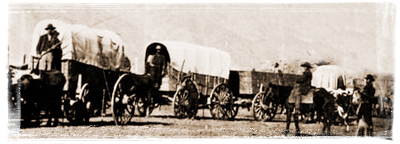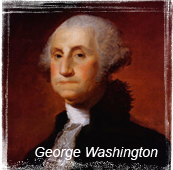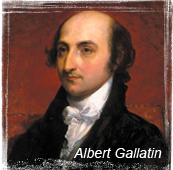National History of the Road
It was a superhighway of dirt, rock, and timber. In 1806, President Thomas Jefferson signed legislation creating a National Road funded solely by the federal government, a landmark moment in early American history.
With westward expansion on the lips of a nation busting at the seams, this road would provide a route from Cumberland, Maryland through Pennsylvania, Virginia (today West Virginia), Ohio, Indiana, and Illinois. Because of its point of origin, it was often referred to as the Cumberland Trail although other popular names included the National Pike, the National Trail, and the National Road. It also has earned the title "the road that built the nation".
George Washington, while serving as an officer under General Braddock in the 1750s, was assigned the duty of creating a military road from western Maryland into Pennsylvania. This road and Zane’s Trace in eastern Ohio were incorporated into the National Road plan.
Albert Gallatin, Jefferson's Secretary of the Treasury, championed the project by securing funding through the sale of western public lands to settlers. Construction began in 1811 and after years of tedious labor, the project reached Illinois where Joseph Shriver began surveying in 1828 from the Indiana border to the Mississippi River.
Transporting commodities by river was now passé as the National Road provided a new route for commerce. Conestoga wagons, the forerunner to the semi-truck, brought valuable goods to the settlers and towns that began popping up along the road. A typical Conestoga was 26 feet long, 12 feet high, and weighed more than a ton. The back wheel of a Conestoga was 5 feet tall. Not wanting to surrender valuable space, the Conestoga had no seat, forcing the teamster driving the wagon to sit on an exterior lazy board or a member of the team. In some instances, he would walk along the wagon.
From its inception, the National Road had its detractors that questioned the constitutionality of the federal government building roads. By the 1830s, the road in the eastern states needed repair but Congress opted not to fund the work and began surrendering ownership to the states. Toll houses were soon erected, allowing the states to generate revenue for maintaining the National Road. By the time of the final federal appropriation in 1838, the government had invested $6.8 million in the National Road.
The railroad's emergence in the 1850s, plus the lack of maintenance of the National Road, saw its popularity deteriorate. However, by the early 20th Century, the rise of the bicycle and automobile created a demand for improved roads. The National Road rose from the dust and prairie grass to become the blueprint for an ocean to ocean route known as U.S. Route 40.







